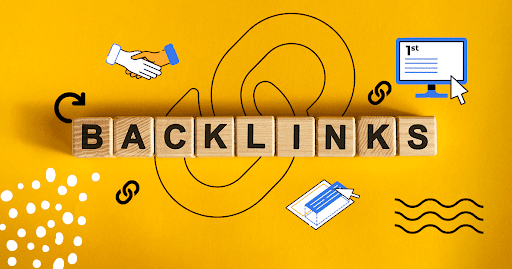Backlinks are the backbone of any successful SEO strategy. Also known as inbound or incoming links, backlinks are links from one website to another. They are crucial for building your website’s authority, boosting search engine rankings, and improving discoverability. This guide will walk you through everything you need to know about backlinks, how they impact your SEO, and strategies for earning quality backlinks.
Why Are Backlinks Important for SEO?
Boosting Search Engine Rankings
SEO Backlinks act as votes of confidence from other websites, signaling to search engines like Google that your content is valuable and credible. The more quality backlinks your site has, the higher it will rank for relevant search queries. Studies confirm that backlinks are still one of Google’s key ranking factors.
Improving Discoverability
Backlinks not only improve rankings but also enhance discoverability. Search engines frequently revisit popular pages, and backlinks from high-traffic websites can help your content get indexed faster. The more authoritative the linking site, the more visibility your content will gain.
Types of Backlinks
DoFollow vs NoFollow Backlinks
Backlinks come in two forms: DoFollow and NoFollow. DoFollow links pass on “link juice,” contributing to your site’s SEO authority, while NoFollow links don’t. Although NoFollow links don’t directly impact rankings, they can still drive traffic and boost visibility.
Editorial Backlinks
These are some of the highest-quality backlinks, achieved when authoritative websites reference your content organically. Editorial backlinks not only improve SEO but can also drive significant referral traffic.
Guest Blogging Backlinks
Guest blogging is an effective strategy for earning backlinks, especially when contributing to high-authority sites in your niche. Ensure that the content is of high value to the host site and audience, as this can earn you valuable DoFollow links.
What Makes a Good Backlink?
Authority and Trustworthiness of the Linking Site
A backlink from a high-authority site like Forbes or TechCrunch will carry significantly more SEO value than a link from a lesser-known site. Google uses metrics such as Domain Authority (DA) and URL Rating (UR) to determine how much authority a backlink can transfer.
Relevance of the Linking Domain
Backlinks from websites within the same niche as yours hold more value. For example, a backlink from a fitness blog is more relevant to your fitness site than a link from a blog about cars. Search engines like Google prioritize links from related industries to determine the relevance and credibility of your content.
Optimized Anchor Text
Anchor text is the clickable text of a backlink. Ideally, the anchor text should include relevant keywords, but avoid over-optimization, as Google’s Penguin algorithm can penalize exact-match keyword links if they appear manipulative.
How to Get Backlinks?
Creating Link-Worthy Content (Linkable Assets)
To earn quality backlinks, you need to create content that people naturally want to link to. Examples include ultimate guides, in-depth case studies, and infographics. For instance, Backlinko’s guide on YouTube SEO attracted over 5,900 backlinks, becoming a linkable asset.
Broken Link Building
This strategy involves finding broken links on other websites and offering your content as a replacement. It’s a win-win: the website owner fixes their broken link, and you get a valuable backlink in return.
Link Roundups
Link roundups are blog posts that aggregate and share high-quality content. Pitching your content to link roundups in your niche is an effective way to earn backlinks and boost your website’s visibility.
Backlink Strategies to Avoid
Avoid Paid Links
Google’s spam policies strongly advise against buying backlinks. Paid links can result in penalties, harming your rankings. Instead, focus on earning links organically through valuable content.
Stay Away from Private Blog Networks (PBNs)
PBNs are a black-hat SEO tactic where multiple websites link to each other to manipulate search rankings. Google’s Penguin update made these tactics less effective, and using them can lead to penalties that damage your SEO efforts.
Link Exchanges and Automated Link Building
Exchanging links with other websites or using automated link-building tools are against Google’s guidelines. These methods often result in low-quality links, which are more likely to hurt your rankings than help.
How to Check and Monitor Backlinks?
Using Google Search Console
Google Search Console is a free tool that allows you to monitor your website’s backlinks. Go to the “Links” section to see the total number of backlinks and referring domains. Although the tool only provides limited data, it’s a great starting point for tracking your link profile.
Advanced Backlink Monitoring Tools (Ahrefs, Moz, SEMrush)
For more detailed backlink analysis, tools like Ahrefs and Moz allow you to track your backlinks, analyze your competitors’ link profiles, and identify potential link-building opportunities. Use filters to find high-authority links, and track your domain’s overall growth in terms of backlinks.
Conclusion
Backlinks are a critical factor for SEO success, playing a key role in improving your search rankings, visibility, and authority. Focus on building high-quality, relevant backlinks through strategies like creating linkable assets, engaging in guest blogging, and leveraging broken link building. By avoiding black-hat tactics such as paid links and PBNs, you’ll be able to build a sustainable and effective backlink profile that will support your long-term SEO efforts.






